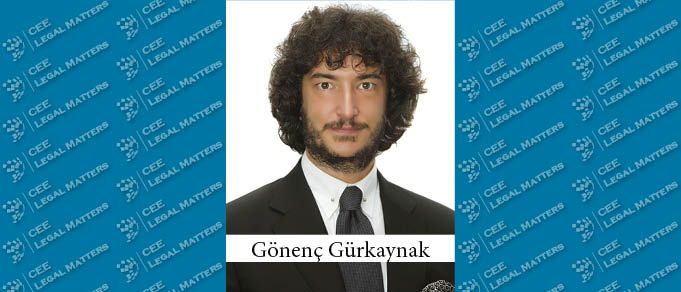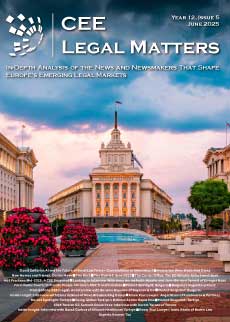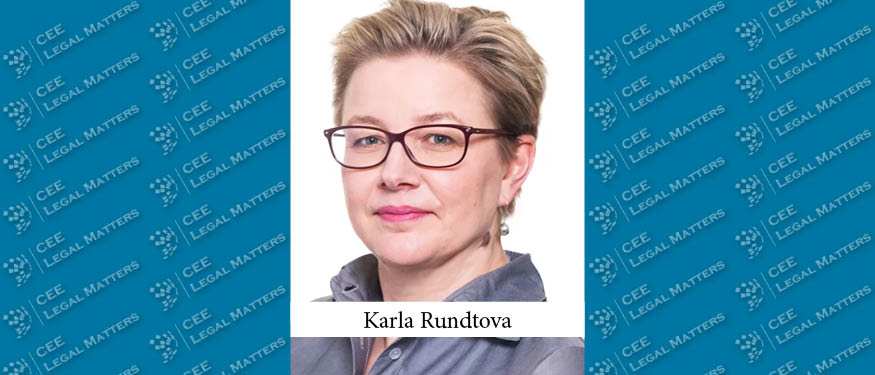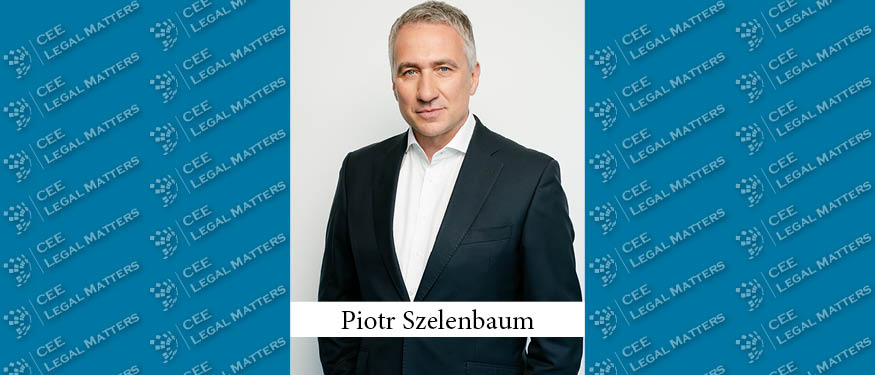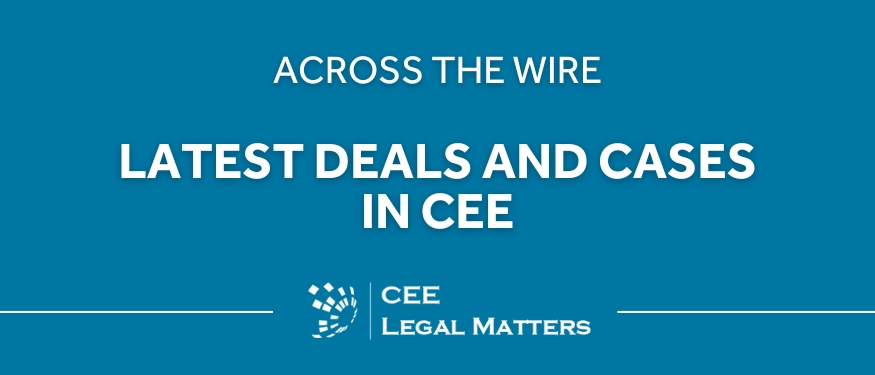The Turkish Competition Authority (“Authority”) has recently published its Draft Communiqué on Commitments Offered During Preliminary Investigations and Investigations on Restrictive Agreements, Concerted Practices, Decisions and Abuse of Dominance (“Draft Communiqué”) which has introduced a new commitment mechanism to Turkish competition law enforcement. This mechanism makes it possible for the undertakings and trade associations to offer commitments during an ongoing preliminary investigation or a full-fledged investigation process, in order to eliminate potential competition concerns under Articles 4 and 6 of the Law No. 4054 on the Protection of Competition (“Law No. 4054”) that prohibit restrictive agreements and abuse of dominance.
The primary legal basis of the commitment mechanism is Article 43 of the Law No. 4054, which was among the very significant changes introduced by the Law No. 7246 Amending the Law on the Protection of Competition (“Law No. 7246”) that entered into force on 24.06.2020. Aside from the commitment mechanism, these changes brought by the Law No. 7246 included (i) the amendments made to the exemption mechanism related to the self-assessment procedure, (ii) the introduction of the significant impediment of effective competition test during concentration analysis, (iii) extending the Turkish Competition Board’s (“Board”) authority to order structural remedies for anti-competitive conduct, (iv) expansion of the Authority’s on-site investigation powers, and (v) the introduction of the de minimis principle as well as the settlement mechanism to Turkish Competition Law enforcement.
The main purpose of the commitment mechanism is to reduce the possible anti-competitive effects of a competition law violation and, at the same time, save time and costs for both the Authority and the investigated parties during the examination processes required for the determination of a violation, as it has been in the cases for Havaalanları Yer Hizmetleri A.Ş. (“Havaş”) and Türkiye Sigorta, Reasürans ve Emeklilik Şirketleri Birliği (Turkish Insurance, Reinsurance and Pension Companies Association, “TSB”) and OSEM Sertifikasyon A.Ş. (“OSEM”), so far. Moreover, it is beneficial for the undertakings as they may be able to avoid paying significant amounts of administrative fines and the negative publicity, in case of a violation.
In order to further illustrate the application of this mechanism set forth under Article 43 of the Law No. 4054, the Authority opened the Draft Communiqué to public comment until December 28, 2020.
I. An overview of the provisions in the Draft Communiqué
Set forth below is a summary of the key provisions of the Draft Communiqué along with certain comparisons with the commitment mechanism in the EU regime, as applicable:
Submission of the commitments to the Board
According to Article 5 of the Draft Communiqué, the commitment requests shall be submitted to the Board within three months, starting from the date the parties have received the investigation notice. The commitment process shall be deemed initiated with the undertakings’ written request to submit commitments to the Board. In the Arslan decision, the Board has confirmed that the commitments offered after the termination of the investigation period shall be rejected, and that the investigation period ended once the third written defenses were submitted to the Authority’s records, according to the process under Law No. 4054.
Under the EU regime, while a definitive date for the submission of the commitments to the European Commission (the “Commission”) has not been defined, the undertakings are encouraged to communicate their interest in offering commitments at the earliest stage possible.
Beginning of the discussions with the Authority
According to Article 6 of the Draft Communiqué, after the submission of the commitment request the Board initiates deliberations with the parties, as soon as possible. The deliberations can be conducted via written correspondence or verbally. Furthermore, it is possible for the Board to postpone the deliberations with the parties in case it is found that further examination is necessary in order to determine the competition law violation.
In terms of the parties’ right to access the investigation file, as per Article 6(3), the Board may prevent the parties from having access to the documents and information which serve as a basis for the competition law concern, if the parties have been notified of the investigation. However, this paragraph may lead to some difficulties in practice, especially as it may be restricting the parties’ right to be informed of the basis of the allegations against themselves, since the investigation notice is not always sufficient to explain in detail every single aspect of an investigation.
Nature of the commitments
According to Article 9 of the Draft Communiqué, both structural and behavioral commitments are acceptable, which is similar to the EU regime.
The commitments shall be proportional to the severity of the competition law violations, and serve as a remedy to efficiently eliminate these violations within a short time period. According to Article 9(3), in order to ensure their efficiency, the commitments which do not require monitoring are preferable. In parallel, under the EU regime, it is mentioned that the commitments shall be self-executing and that if needed, a trustee can be appointed to assist the Commission to monitor the execution of the commitments.
It is also noteworthy that the Draft Communiqué sets forth that the parties under investigation cannot offer commitments with regard to the complainant’s or third party’s actions. However, pursuant to Article 8(3) of the Draft Communiqué, in cases where the implementation of the commitment requires an agreement with the complainant or a third party, documents indicating that an agreement has been reached to with the complainant or the third party are also submitted to the Board, alongside with the commitments.
Evaluation of the commitments
The Board primarily takes into consideration whether the commitments offered by the parties are capable of eliminating the competition law violation. If the Board decides that the commitments are suitable and effective, it renders them binding for the parties. Consequently, the investigation on the parties will be terminated; or in case the investigation is yet to be launched, the Board will forgo initiating a full-fledged investigation, as it is possible to submit the commitments during the preliminary investigation process under Article 5 of the Draft Communiqué.
If the Board deems that the proposed commitments are not fit to eliminate the violation under scrutiny, it can either invite the parties to amend the commitments, for only once, or terminate the commitment process.
Opinions of the complainant and third parties
While evaluating the commitments, the Board may decide to consult the complainant and third parties on the proposed commitments, and take their opinions into consideration, as well. In this respect, the Board may decide to (i) affirm the commitments and make them binding, or (ii) ask the parties to amend the commitment, just the once, or (iii) to terminate the commitment process, following its evaluation based on the opinions received from the complainant or a third party. There is reason to believe that it is crucial for the Board to explain the evaluation criteria in its reasoned decision on the commitments, in order to prevent future queries concerning legal certainty.
Termination of the commitment process
The commitment process comes to an end if the parties do not submit their commitments in the timeline determined by the Board, or if the parties decide to retract their commitments. The parties cannot offer new commitments once the commitment process has been terminated.
The Board’s decision rendering the commitments binding for the parties
Article 14 of the Draft Communiqué sets forth that the Board’s decision rendering the commitments binding for the parties, shall not include any reference as to whether the agreement, decision, or the practice in question, does or does not constitute any violation of competition law. In this respect, the Board’s decision on the proposed commitments shall not include any finding with regard to the violation.
Monitoring and the execution of the commitments
According to Article 15 of the Draft Communiqué, the parties` compliance with respect to commitments can be subsequently monitored by means of the parties’ regular submission of reports to the Board, the appointment of a third party to serve as a trustee, or through cooperation with professional associations or relevant public institutions. The Board also reserves its right to monitor the commitments ex officio. When the parties have fully complied with and fulfilled their commitments, they will inform the Board, which will render a decision to this effect.
II. An analysis of the points that are not fully clarified in the Draft Communiqué
Despite the fact that the Draft Communiqué elucidates the main issues with regard to the implementation of the commitment mechanism, there are still certain points of concern worth mentioning which remain to be clarified through the future decisions of the Board.
Scope of the commitment mechanism
According to Article 43(3) of the Law No. 4054, commitments are not acceptable for evident and severe infringements such as price fixing, territory and customer allocation, or supply restriction among competitors. Article 2 of the Draft Communiqué confirms this by reiterating that hardcore restrictions do not fall within the scope of the commitment mechanism.
On the other hand, under the EU regime, commitments can be submitted for all violations other than cartels, as there is no commitment that could possibly solve the competition problem in case the very nature of the infringement calls for a fine.
The Board’s definition of hardcore restrictions is not limited to the ones explicitly referred to in the relevant articles. For instance, in some decisions of the Board, the exchange of sensitive information has been deemed to be “cartel,” while in others, it has been defined among the “other violations” that have been prohibited by Article 4 and Article 6 of the Law No. 4054 and which do not fall within the scope of cartels.In addition, it is not clear whether the practices regarding resale price maintenance can benefit from the commitment mechanism.
In this respect, which violations are considered to be hardcore restrictions are not yet fully defined and may vary through the Board’s decisions over time.
The nature of the reasoned decision rejecting the commitments offered by the parties
As mentioned in Article 43 of the Law No. 4054, if the Board decides that the proposed commitments can resolve the relevant competition problems, it may render them binding for the relevant undertakings or associations of undertakings and decide to forgo an investigation, or to terminate an ongoing one. However, according to Article 10 of the Draft Communiqué, the Board may also reject the commitments offered by the parties and terminate the commitment process.
The Draft Communiqué also does not refer to the nature of the Board’s decision rejecting the commitments offered by the undertakings. While it seems possible for the parties to file a lawsuit against the rejection decision of the Board, as mentioned in the Arslan decision below, it would be ideal if the Draft Communiqué included a specific provision with regard to the nature of the decision to clarify this point (i.e., whether such rejection of commitments would qualify as a final decision issued by the Board) and whether the parties would be able to apply for its judicial review.
In the Arslan decision, the Board evaluated the request of Arslan Nakliyat San. ve Tic. A.Ş. (“Arslan”) to terminate the investigation initiated against it, based on the commitments proposed by Arslan to the Board pursuant to Article 43(3) of the Law No. 4054. The Board rejected the commitments proposed by Arslan for failing to meet the timing prerequisite, as they had submitted their commitments after the investigation phase was completed. Moreover, the case team’s opinion with regard to the nature of the alleged violation indicates that the commitments submitted by Arslan would not fall within the scope of the commitment mechanism, as the violations subject to the investigation constituted hard-core infringements such as price fixing and customer allocation between competitors.
The Board indicated in the Arslan decision that it is possible for the parties to file a lawsuit against the Board’s decision before the administrative court, within 60 days starting from the date the reasoned decision was served on the parties.
Sanctions in case of non-compliance with the commitments
According to Article 14(2)(h) of the Draft Communiqué, the sanction to be applied to the parties in case of non-compliance with the offered commitments, will also be set out within the Board’s decision that renders the commitments binding for the parties.
In case of non-compliance with the offered commitments, according to Article 43(4) of the Law No. 4054, the primary sanction to be applied by the Board is to re-launch an investigation concerning the undertaking which has violated the offered commitment. However, the Draft Communiqué does not contain a specific provision with regard to other possible sanctions, such as the imposition of an administrative fine to the parties in case of non-compliance, and seems to have left it to the Board’s discretion.
Under the EU regime, it has been regulated that if an undertaking concerned does not comply with its commitments, the Commission can impose a fine of up to 10 per cent of the undertaking’s annual turnover without having to prove any violation of the competition rules. The Commission can also impose periodic penalty payments of up to 5 per cent of the average daily turnover until the undertaking complies with its commitments. In parallel, the Commission may decide to re-open the investigation that was closed pursuant to the commitment decision, with a view to adopting a prohibition decision on the matter.[9]
Article 17 of the Law No. 4054 sets forth that in case of non-compliance with the commitments, the Board shall, for each day, impose on undertakings and associations of undertakings an administrative fine corresponding to 0.05% of their annual gross revenues (generated in the financial year preceding the decision). However, the Draft Communiqué does not clarify whether the administrative monetary fines regulated under the relevant provisions of the Law No. 4054 are applicable without the need for proving any violation of the competition rules, as is the case with the EU regime. To that end, there is room to argue that the Draft Communiqué should contain a more enlightening provision with regard to the sanctions and proving mechanism of any violation of the competition rules, in case of non-compliance with the commitments.
Commitments beyond the necessary extent
What the Board’s approach would be, if a commitment beyond the necessary extent were to be offered by an investigated undertaking, is a noteworthy issue that has not been fully clarified within the scope of the Draft Communiqué.
Article 9(2) of the Draft Communiqué sets forth that the commitment shall be proportional to the severity of the competition law violation, suitable to resolve these problems within a short period of time, and effectively applicable. Therefore, in case that the undertaking offers a commitment which is not proportional and in fact more burdensome to the undertaking than necessary to resolve the competition law problem, it is not clearly indicated whether the Board will notify the undertaking of this finding, and recommend an amendment so that the undertaking can revise its commitments as applicable within the scope of Article 10(3) of the Draft Communiqué. As this may cause certain difficulties in implementation of the commitment mechanism, it would be more prudent to include a specific arrangement into the Draft Communiqué, to avoid any ambiguities going forward.
III. Initial implementations of the commitment mechanism
The Board’s recent decisions, which serve as the initial examples of the commitment mechanism’s application in Turkish competition law enforcement, can be summarized as follows:
Havaş decision
According to the Board’s announcement dated 06.11.2020, Havaş is the first example of the application of the commitment mechanism in Turkish competition law enforcement.
In the Havaş decision, the Board decided to launch a full-fledged investigation on 24.07.2020 against Havaş and MNG Havayolları ve Taşımacılık A.Ş., S Sistem Lojistik Hizmetler A.Ş. and Türk Hava Yolları A.O. operating in the field of bonded temporary storage or warehouse services at airports in order to determine whether these companies had violated Article 6 of the Law No.4054. During the investigation process, on 07.10.2020, Havaş proposed commitments to the Board. In this respect, deliberations with the Authority started right after the submission of this commitment. Regarding the timings, within 6 days after the commitment proposal, Havaş and the Authority convened for a meeting on 13.10.2020, where the Authority shared further information regarding the competition concerns within the scope of the investigation. Accordingly, Havaş submitted its final commitment package to the Authority on 19.10.2020.
The commitment proposed by Havaş indicates that the commitments would be effective for a specific period of time. As per the commitments submitted, Havaş will terminate its practice of charging transfer fees when a customer wishes to switch warehouses, which restricts the transfer of imported products to competitor and alternative warehouses. Havaş stated that the proposed commitment does not require monitoring.
According to the case team’s opinion, the commitment proposed by Havaş is proportional with the competition concerns at hand, suitable to resolve competition concerns, able to be executed in a short period of time and efficiently applicable. However, the case team suggested that the commitment period is not sufficient to eliminate the competition concerns permanently, and that the period set forth for the application of this commitment should be amended as indefinite. The case team pointed out that it would be possible for Havaş to apply to the Board to retract its commitment, in case any essential change occurs in the market in the future.
However, in its evaluation, the Board decided that the commitment, as submitted by Havaş, is suitable to resolve the competition concerns. In this respect, the commitment process initiated upon the request of Havaş has been concluded within approximately one month and thus, the investigation has been terminated for this entity. Nevertheless, the investigation remains pending for the other three undertakings.
TSB/OSEM decision
According to the Board’s announcements dated 11.01.2021 and 12.01.2021, the commitment mechanism has been applied within the scope of the investigation conducted against TSB and OSEM. The Board’s decision with regard to TSB/OSEM is of importance as aside from constituting the second example of the application of the commitment mechanism, it is also the first decision that structural and behavioral commitments have been jointly accepted by the Board.
The commitments included, among others, the submission of a copy of the transfer agreement to the Board, termination of the data processing services protocol executed between OSEM and Sigorta Bilgi ve Gözetim Merkezi (Insurance Information and Monitoring Center), and submission of an undertaking that the board of directors of OSEM would not use the information which becomes available to them due to their board memberships in OSEM, for their own or third parties’ benefit.
As the Board accepted the commitments offered by TSB and OSEM, the investigation has been closed. It is noteworthy that the Board has evaluated and decided on the commitments in a short period of time, in 15 days after the final submission of the commitments.
IV. Conclusion
It is certain that the commitment mechanism will bring many advantages for both the Authority and the investigated parties, in terms of time and cost efficiency and minimizing the impacts of anti-competitive practices. Moreover, the implementation of the Draft Communiqué will play an important role in avoiding certain question marks during the whole process of offering and fulfilling commitments. However, there are still aspects of this new institution have not been clarified by the Draft Communiqué and while Havaş and TSB/OSEM decisions shed light on the application of the commitment mechanism, it is certain that the Board’s approach in its future precedents will further shape the merits.
(First published by Mondaq on January 26, 2021)
By Gonenc Gurkaynak, Partner, Eda Duru, Counsel, Betul Bas Comlekci, Associate, Esma Aktas, Associate, and Asli Su Coruk, Associate, ELIG Gürkaynak Attorneys-at-Law

